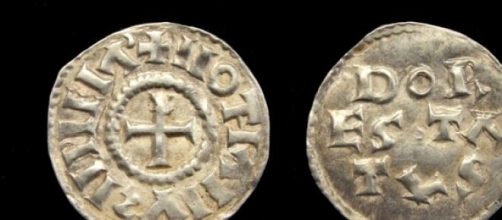It is a story of which dreams are made and which keeps the magic alive. A previously virtually unknown group, the Weekend Wanderers Metal Detecting Club, made what they can modestly describe as the "best ever find by the club" only four days before Christmas.
Their discovery was not only unheralded but of national historic importance - a stash of 5,251 coins of Saxon descent. The coins, depicting the heads of King Canute and Ethelred the Unready, were found in a lead container in an area of land in Padbury, a small village outside of Aylesbury.
The parish will now be inextricably linked with this find of archaeological interest and will undoubtedly secure its future as an area of historic interest. The Weekend Wanderers have only been in existence for twenty five years yet their discovery is the most significant Saxon find in Britain since 2009.
Five years ago, amateur metal detector, Terry Herbert, discovered a hoard of 1600 artefacts that was valued at £3.29 million and was shared between the finder and the landowner. More recently in 2012 in Bedales, Yorkshire, Viking relics were found by another amateur detector which fetched around £50,000. Paul Coleman of the Wanderers who made the discovery admitted that he "knew it was important straight away." He described the moment when he heard a significant noise from his detector and then had to dig down to a depth of about two feet.
It was dark and he initially saw "one shiny disc .. reflecting in the sky" before discovering "layers of coins."
Spokesperson for the group, Peter Welch, described how the group was shell-shocked at their discovery and was, "something you dream of witnessing" in what has become the second most significant find of Saxon coins in this country.
Their feat was eclipsed back in 1840 when 7,000 coins were discovered in Cuerndale, near Preston, Lancashire. Coleman stated that coins of this era "rarely drop below £200 each." which could guarantee the group and the landowner a share of £1.05 million once the authenticity is proven. It will now be down to a coroner to assess whether the find meets the definition of treasure under the Treasure Act.
It would seem that they can approach this with some degree of confidence as the Act states that it will be defined as treasure when there are "two or more coins from the same find provided they are more than 300 years old and contain 10% gold or silver." It defines groups of coins from the same find as being, "hoards that have been deliberately hidden; smaller groups of coins, such as the content of purses, that may be dropped or lost; votive or ritual deposits."
The coins will be analysed by the British museum. Whatever the outcome, the story gives people hope with its mixture of adventure, discovery and ultimately providence. Such finds as this happen so rarely but have the same impact as a lottery win; it may spur people on to get out there and dig, in the vague hope that one day their fortune will be made.
In the coming days, the village of Padbury will inevitably see a growth in the number of archaeologists, interested parties and enthused beginners, hoping to profit from the Wanderers' discovery. Who knows, perhaps the Weekend Wanderers' numbers will surge in the coming weeks, maybe their will be even more significant finds in the area?
Now that Christmas has been and presents have been unwrapped, perhaps the most significant impact will be that children and parents up and down the country will take out their new metal detectors onto a local beach or plot of land and start their voyage of discovery. If this is the impetus to get us out and explore our local environment, then this story will have had a happy ending.

